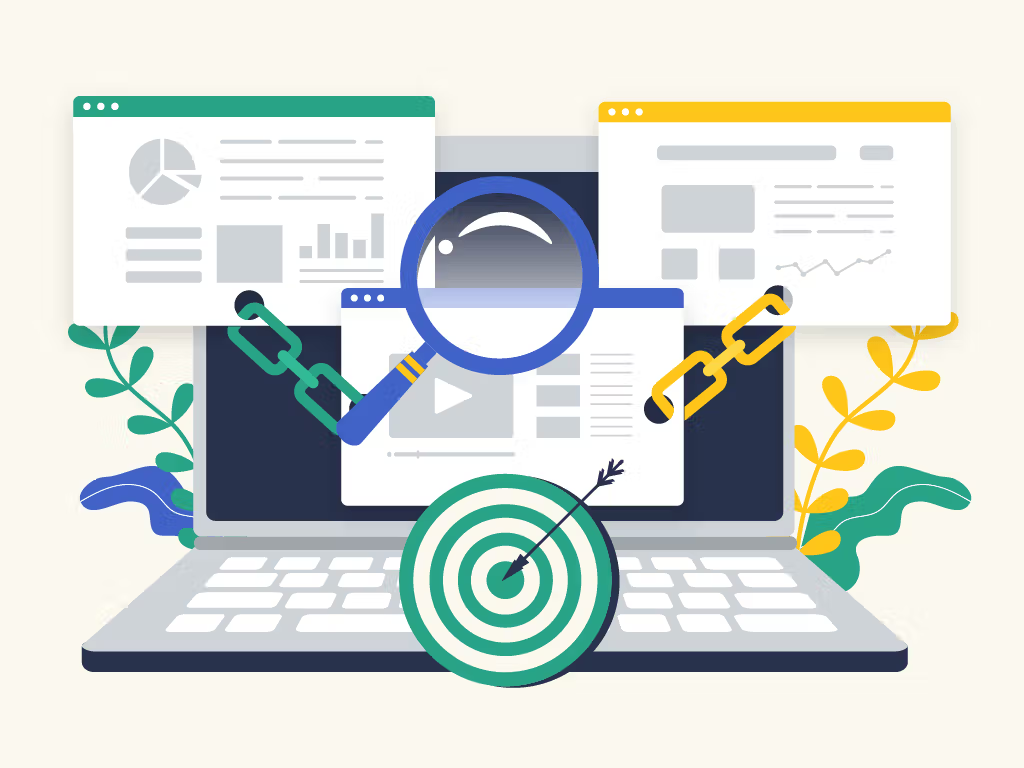Internal Links Are Essential — Here's Why They Matter More Than Ever
Let's be honest: when discussing SEO, internal linking often goes unnoticed. People talk about backlinks, Core Web Vitals, keywords, content velocity... but internal links? Not so much.

Yet, in 2025, a savvy internal linking strategy might become your most overlooked and underutilised SEO asset.
If your rankings have plateaued, if your bounce rates are alarming, or if your content isn't performing as it should — the issue could be internal links, or more accurately, their absence.
Here's why internal linking warrants your focus — and how to leverage it for search success.
What Internal Links Truly Do (That Most People Overlook) An internal link connects one page on your site to another. Sounds straightforward. But behind the scenes, internal links play a significant role in SEO:
- Help search engines unearth content
- Transfer link equity (aka ranking strength) between pages
- Formulate topic relationships and site architecture
- Guide users further into your content
- Enhance time on site and lower bounce rate
And here's the punchline: they're entirely within your control. Unlike backlinks — dependent on third parties — internal links are your SEO playground.
Why They're More Important in 2025 Google's 2025 algorithm is all about context. It doesn't just assess a page in isolation — it evaluates how that page integrates into your overall site structure.
So, if you publish an excellent blog post but fail to internally link it to any related service page, case study, or relevant article?
You're not just squandering an SEO chance — you're telling Google, “This content isn't crucial.”
- Even worse, you could be:
- Wasting crawl budget on low-value pages
- Dividing your authority across duplicate or competing content
- Allowing high-performing content to remain isolated
Search engines now anticipate semantic relationships. Internal links are how you showcase them.
Common Internal Linking Mistakes We Encounter Let's highlight some pervasive issues still affecting websites — even in 2025:
❌ No Internal Links at All Publishing content without linking to anything else on your site is a dead end for users and crawlers.
❌ Random, Unorganised Links Linking when it "feels right" without considering site hierarchy, priority pages, or user journey.
❌ Linking Solely for Navigation Dropdown menus and footer links help — but they’re insufficient. Google prioritises in-content links because they're contextual.
❌ Using Inappropriate Anchor Text Linking with phrases like “click here” or “learn more”? Squandered opportunity. Utilise descriptive, keyword-relevant anchor text that informs users and bots what to anticipate.
What a Strategic Internal Linking Plan Looks Like Here's how we craft internal linking strategies that genuinely drive SEO growth:
- Start with a content map → List every page and categorise by type (product, blog, service, etc.)
- Define priority pages → These are the ones you aim to rank and convert — they should receive the most internal link attention.
- Group content into clusters → Create pillar pages and link supporting articles back to them (and to each other).
- Use keyword-rich anchor text → Specify what the linked page is about. Be precise.
- Link both ways → Don't just link from blog to service — link from service back to blog to reinforce relationships.
- Audit and optimise regularly → As you introduce new content, revisit old posts and update internal links accordingly.
How Internal Linking Can Positively Impact You don't need fictional statistics to prove internal linking's efficacy — you can experience it:
- Your site becomes easier to navigate
- Time-on-site rises
- Crawlability enhances
- Your pivotal pages begin climbing
- Google comprehends your content clusters better
Best of all? It's quick, free, and entirely under your command.
Final Word: Don't Overlook the Links You Possess If you're still focusing exclusively on backlinks and neglecting internal ones, you're missing one of the most efficient, scalable means to boost your rankings.
In 2025, on-page SEO extends beyond keywords — it encompasses structure, relationships, and relevance. Internal links are how you establish all three.
Want to identify where your site is losing authority and how to rectify it?
Get an AI-powered internal link audit and let's optimise what you already possess.





.svg)


.svg)